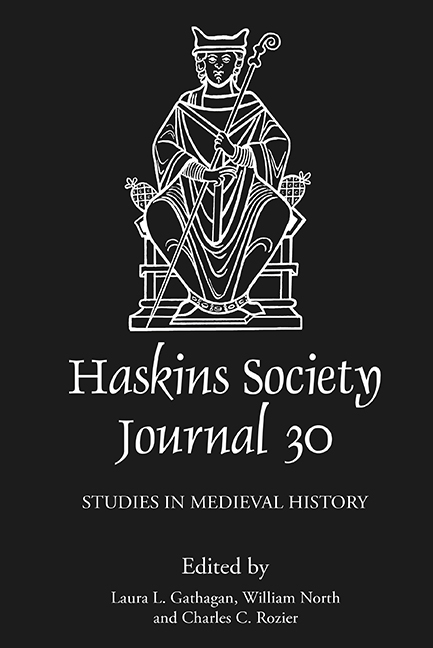Book contents
- Frontmatter
- Contents
- List of Figures and Tables
- Editor's Note
- Abbreviations
- 1 Beyond Corfe: Ælfthryth's Roles as Queen, Villain, and Former Sister-in-law
- 2 Medieval Curses and Their Users
- 3 ‘Although He Was His Nephew’: A Study of Younger Hautevilles Either Side of the Sea
- 4 Nearly Gold and Nearly Perfect? Copper, Meaning, and Materiality in Norman Sicily
- 5 Bound by Loyalty: Conflict, Communication and Group Solidarity in Early Twelfth-Century Southern Italy
- 6 Hugh of Lincoln and Adam of Eynsham: Angevin Kingship Reconsidered
- 7 Earthly Kings, Heavenly Jerusalem: Ralph Niger's Political Exegesis and the Third Crusade
- 8 ‘Holy Christendom's New Colony’: The Extraction of Sacred Matter and the Colonial Status of the Latin Kingdom of Jerusalem
- 9 Medieval French Peasants: The New Frontier?
6 - Hugh of Lincoln and Adam of Eynsham: Angevin Kingship Reconsidered
Published online by Cambridge University Press: 30 April 2020
- Frontmatter
- Contents
- List of Figures and Tables
- Editor's Note
- Abbreviations
- 1 Beyond Corfe: Ælfthryth's Roles as Queen, Villain, and Former Sister-in-law
- 2 Medieval Curses and Their Users
- 3 ‘Although He Was His Nephew’: A Study of Younger Hautevilles Either Side of the Sea
- 4 Nearly Gold and Nearly Perfect? Copper, Meaning, and Materiality in Norman Sicily
- 5 Bound by Loyalty: Conflict, Communication and Group Solidarity in Early Twelfth-Century Southern Italy
- 6 Hugh of Lincoln and Adam of Eynsham: Angevin Kingship Reconsidered
- 7 Earthly Kings, Heavenly Jerusalem: Ralph Niger's Political Exegesis and the Third Crusade
- 8 ‘Holy Christendom's New Colony’: The Extraction of Sacred Matter and the Colonial Status of the Latin Kingdom of Jerusalem
- 9 Medieval French Peasants: The New Frontier?
Summary
This article examines Adam of Eynsham's Life of Hugh of Lincoln, the Magna Vita, and its portrayal of that bishop's interactions with the Angevin kings of England. Through a close reading of the text, and by placing the incidents recorded by Adam in a wider context, it explores Adam of Eynsham's conception of how a saintly bishop should criticize a king, and how clerics might do so without provoking royal wrath. Previous interpretations of the incidents recorded by Adam have centred on the notion that the Angevin kings lacked the sacrality or legitimacy of their predecessors and have claimed that those same monarchs sought to rectify this deficiency by associating themselves with figures such as Hugh of Lincoln.
This paper therefore has two aims. First, it challenges the argument that Hugh's interactions with the Angevin kings constitute a useful or viable measure of royal sacrality. Second, it suggests that Hugh of Lincoln's admonition of the Angevin kings drew upon both insular and far more widespread traditions of how a bishop should criticize the Lord's Anointed. By examining Adam's portrayal of these incidents in more detail, and in particular the specific targets of Hugh's criticisms and his methods of pursuing them, we draw attention to the possibilities and limitations of episcopal admonition. In addition, the article offers a broader reassessment not just of Adam of Eynsham's portrayal of the Angevin kings but also of the government and royal agents over which they presided, by exploring the incidents he described in greater depth than has hitherto been the case.
Adam of Eynsham's Magna Vita has been seized upon as a source to characterize the Angevin kings. The text has been quarried both as a source of anecdotes relating to the personalities of particular monarchs and, more substantially, to argue that the Angevins as a royal dynasty lacked the sacrality and legitimacy enjoyed by their predecessors. Historians, with the exception of Karl Leyser, have rarely scrutinized the Magna Vita in detail, however, and a reassessment of Adam's portrayal of Angevin kingship is long overdue.
- Type
- Chapter
- Information
- The Haskins Society Journal 302018. Studies in Medieval History, pp. 133 - 158Publisher: Boydell & BrewerPrint publication year: 2020

